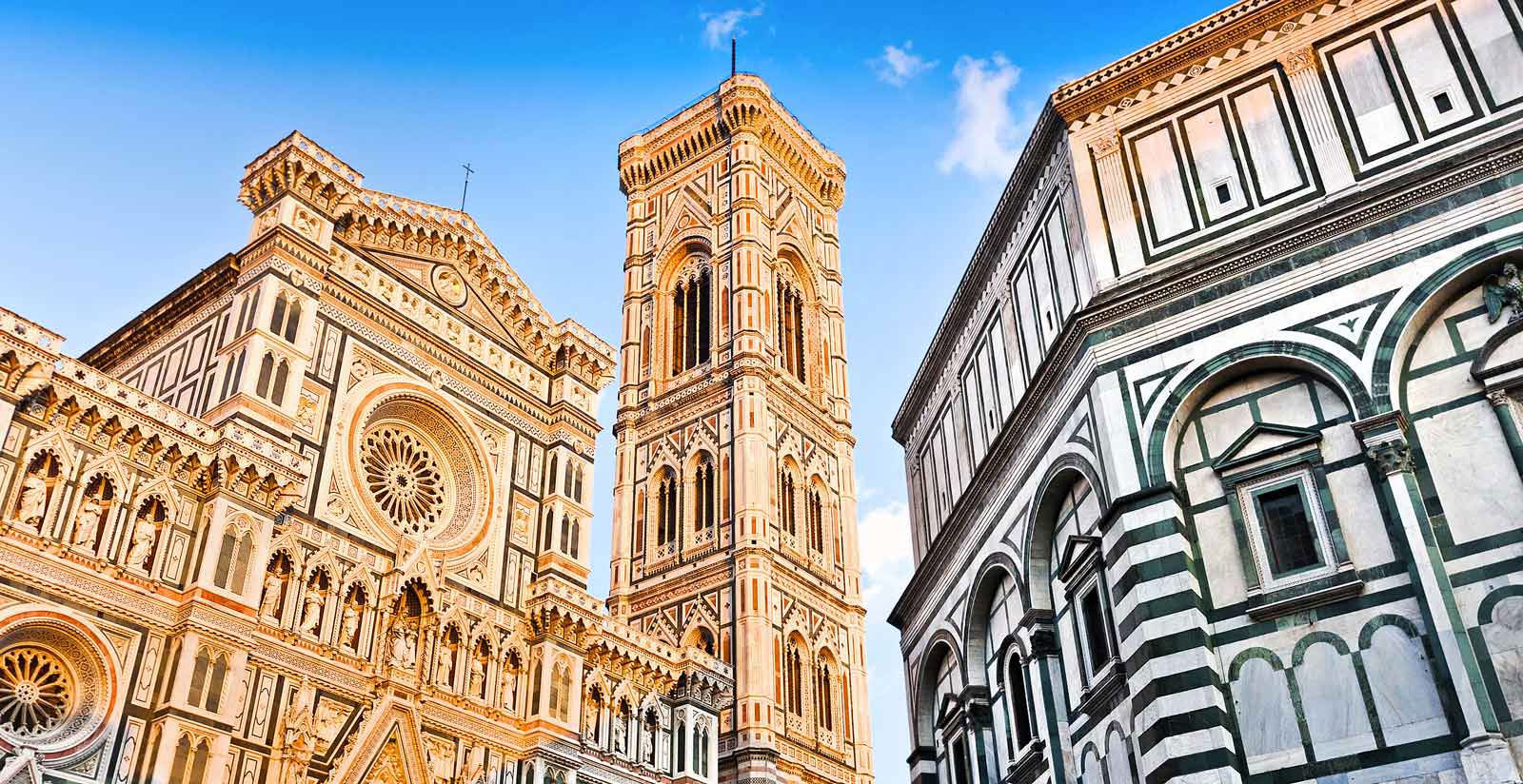Into the history of the Cathedral or Duomo of Florence have gone six centuries of work.
The original project was designed by Arnolfo di Cambio at the end of the 13th century while the cupola, that is a symbol of Tuscany, was created by Filippo Brunelleschi, a renowned artist of the Renaissance period. The facade however, that completed this magnificent work of architecture, was carried out as late as the 19th century.
Enriching the history of this monument was a series of both exterior and interior interventions both decorative and structural. The construction of two sacristies early on to the 16th century marble floors, from the execution of the sculptures to the frescoes signed by Paolo Uccello, Andrea del Castagno, Giorgio Vasari and Federico Zuccari (the Last Judgement in the cupola). This Cathedral was the third and last to be built in Florence in 1412 and got the name Santa Maria del Fiore or “Holy Mary of the Flower” in allusion to the lily symbol of the city.
The Duomo was built on the top of Florence’s second Cathedral, Santa Reparata, when in 1293, the Florence Republic decided to replace this church with a larger and more magnificent cathedral and were also willing to fund its construction and therefore Santa Reparata was later demolished in 1375. A large part of the remains of this church can be seen today in the archaeological area underneath the Cathedral. The costs however were also expected to be partly contributed by the population itself. A tax was put on all last wills and testaments which was in turn put towards the construction of the Cathedral.

In 1294 the project was ultimately assigned to Arnolfo di Cambio who laid ceremoniously the first stone on September 8th, 1296. Head Architect of the City Council, Arnolfo was already revolutionizing the Franciscan basilica of Santa Croce. As well as the Baptistery, the diameter of the Dome was projected to be 45.5 meters. Arnolfo worked on the Cathedral up until his death in 1302, but four years earlier had already begun work on the construction of Palazzo Vecchio as well. After the death of Arnolfo, the work grounded to a halt.
In 1334 Giotto was called to oversee further construction but died shortly after in 1337. He dedicated most of this time to the building of his Bell Tower. Work was then succeeded by Andrea Pisano, author of the South Doors of the Baptistery, up until 1348 when the terrible plague reduced the population in half from 90,000 to 45,000.
The Bell Tower was finally completed in 1359 after 10 years of work supervised by Francesco Talenti. In 1360 a new project was begun with the collaboration of Giovanni di Lapo Ghini. The project saw the division of the centre nave into four square bays, with fewer windows than the original design by Arnolfo, and with two lateral bays. In 1375 Santa Reparata was taken down: which indicated that Santa Maria del Fiore was ready to be the new cathedral of Florence.
Many years later, when Grand Duke Francesco I de’ Medici decided to realize a new facade in 1586, the sculptures then found on the existing facade, some of Arnolfo himself, were dismantled and transferred to the Museum of the Opera inside the Duomo.